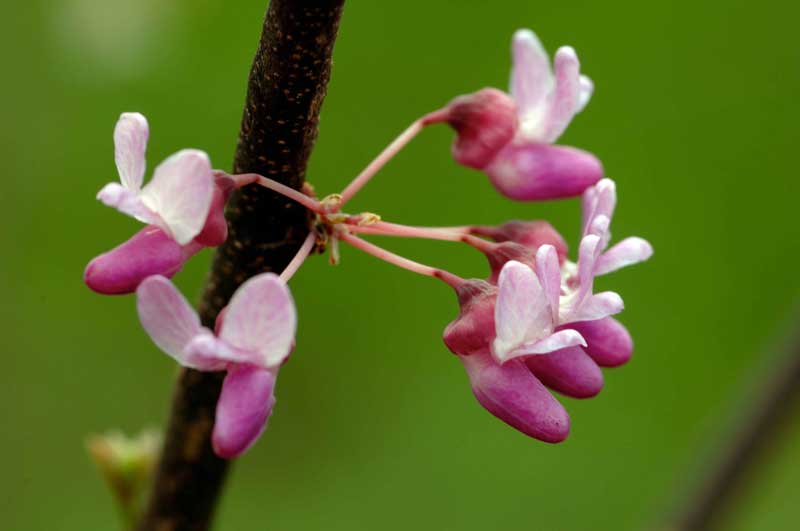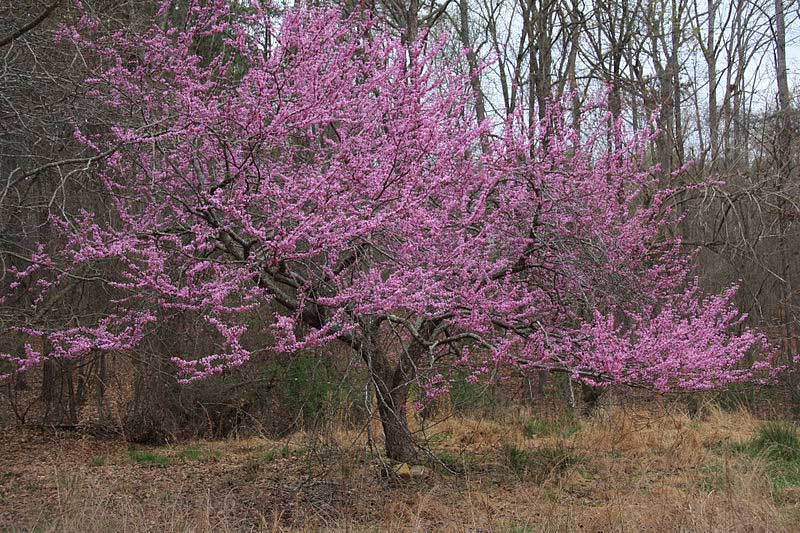Family: Fabaceae (Leguminosae) – Pea and Bean Family
The Eastern Redbud is a very distinctive, eye-catching tree, especially in the spring. The pink blossoms emerge before the leaves, and will saturate the twigs and branches with very colorful pea-shaped blossoms.
The leaves are very distinctive. Redbuds have heart-shaped leaves with pointed tips, and they are darker green on the upper surface but lighter green underneath. They turn various shades of yellow in the fall.
Redbuds are classified as legumes, hence the family name Leguminosae (pea and bean family). We normally associate legumes with garden or agricultural crops such as peas, beans, alfalfa, clover, etc.
How is the Redbud tree similar to a pea plant? Redbuds produce seeds in fruiting structures called pods. These pods look in many ways like the pods of other legume plants, such as peas. The Eastern Redbud seed pods can grow up to four inches long. They are oblong, flat, pointed at each end, brown in color, and mature in summer. They remain on the tree until after the leaves fall and once released from the pod the seeds are dispersed by animals or weather conditions.
How are redbuds different from other legumes? Redbud trees do not fix nitrogen, like most other legumes do. That requires a symbiotic relationship with special bacteria called rhizobia that convert atmospheric nitrogen into a usable nutrient source.
Redbuds can be found throughout eastern North America. Its natural habitat includes forested areas and it is considered a forest understory tree.
Due to its pretty pink flowers in the early spring, and its ability to thrive in a wide range of soil types and climates, it has gained much appeal with horticulturalists. It is a popular choice for landscaping because it can be used as a small tree or shrub. Consumers can pick from several commercially available cultivars.
The seeds are considered an important source of food for wildlife. Cardinals, Ring-necked Pheasants, Rose-breasted Grosbeaks, and Bobwhites are known to feed on the seeds. White-tailed deer and squirrels also find the seeds an important food source.
Finally, there is some infamous folklore associated with this tree. A closely related species of Redbud, dubbed the “Judas Tree,” was, according to Christian legend, the tree picked by Judas Iscariot to hang himself after he betrayed Christ.
Additional References:

